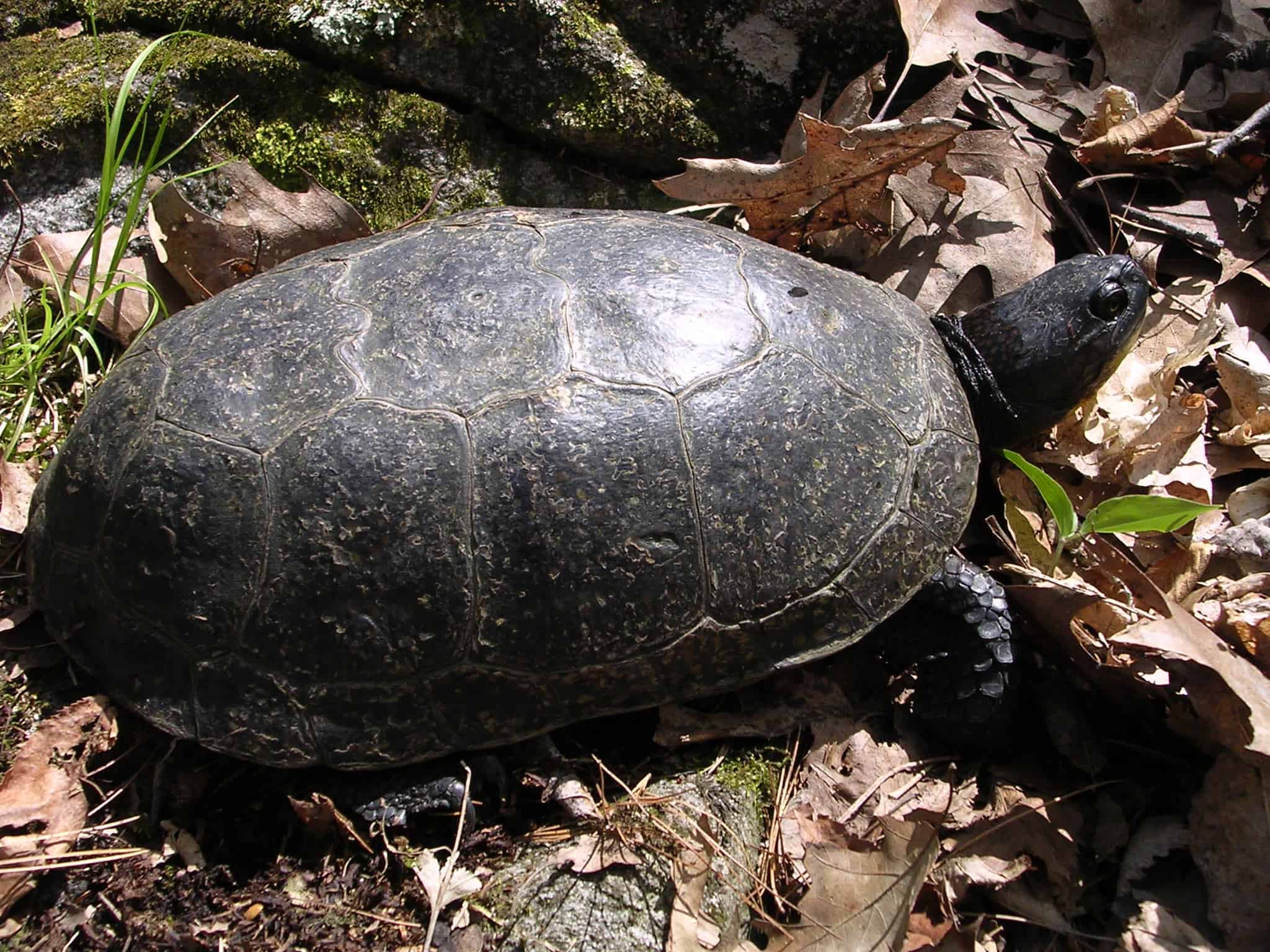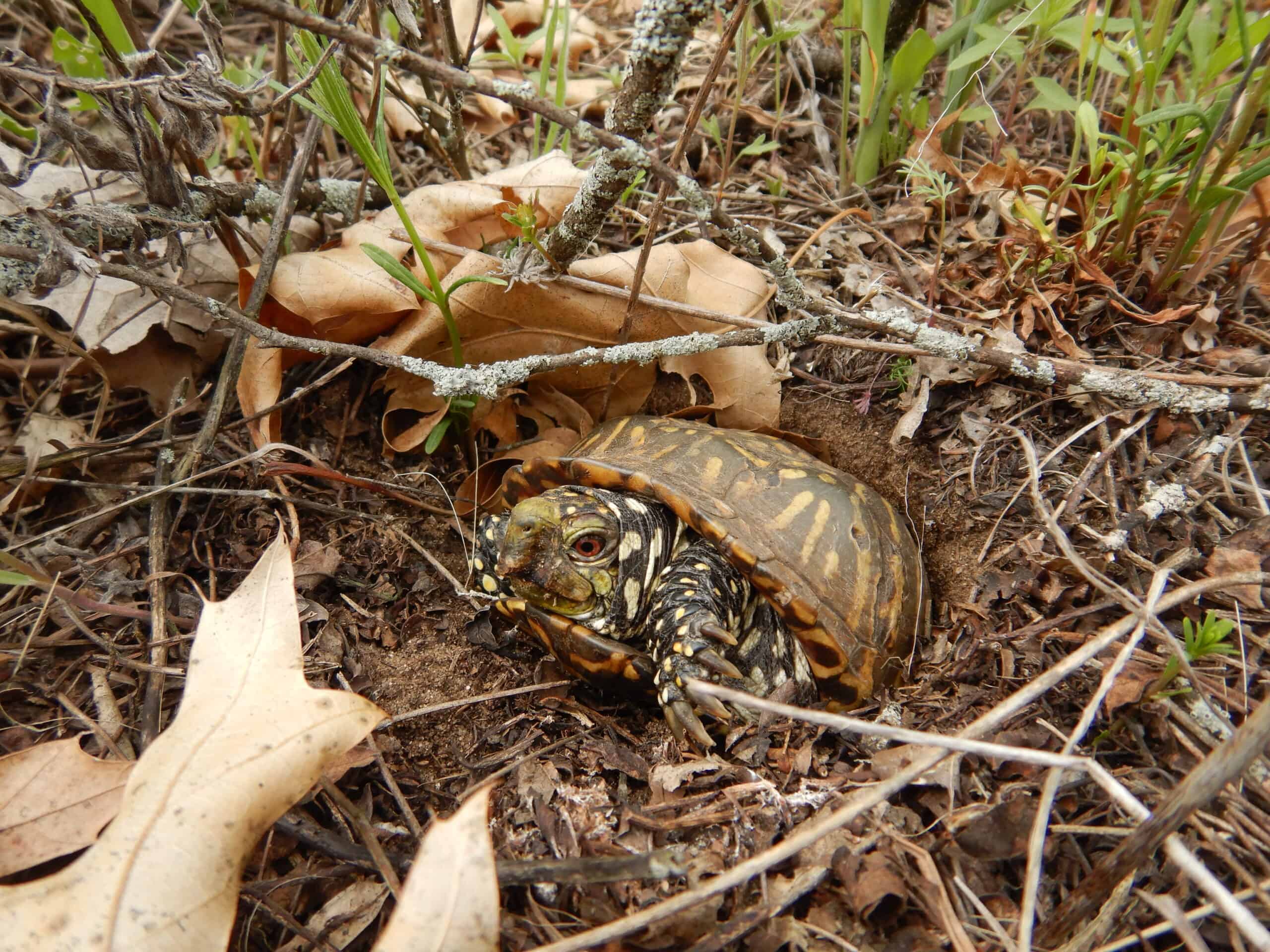Share this article
Wildlife Featured in this article
- Blanding's turtle
Development pushes one Blanding’s turtle population to the brink
The Ottawa turtles will likely reach “quasi-extinction” in the next decade
A residential project will result in the complete loss of a Blanding’s turtle population in Ottawa, researchers found.
Within the next decade, biologists believe the population will reach what they call “quasi-extinction,” with fewer than four individuals left.
“For that population, it’s too late,” said Gabriel Blouin-Demers, a biology professor at the University of Ottawa.
Blouin-Demers is an author of a study published in Animal Conservation using telemetry and mark-recapture to study the freshwater turtles before and after the residential development near a major Ontario road called Terry Fox Drive.
The construction project had been approved in the 1980s, although construction had been put on the shelf for years. By 2010, when the project was meant to begin, concerned citizens brought forth concerns about Blanding’s turtles (Emydoidea blandingii) living there. Blanding’s turtles, found in the Great Lakes region in southern Ontario northwest to Sault Ste. Marie and east to southwestern Québec, are listed as endangered under the Canadian Species at Risk Act.
Provincial laws required developers to mitigate impacts to wildlife, but those measures didn’t prevent the destruction of critical habitat, Blouin-Demers said. While developers placed fencing along Terry Fox Drive to divert turtles toward passages like culverts, he said, the fences abruptly ended at entrances, rather than forming a U shape to redirect them away from the road. As a result, the turtles followed the fencing to busy Terry Fox Drive, where researchers found several dead animals each year.
In addition, construction crews bulldozed the landscape without leaving enough habitat for the species. A pond for the turtles was created dangerously close to the main road, researchers found, and a proposed artificial nesting site beside it was unusable.
“There was no maintenance done, so now it’s totally overgrown,” Blouin-Demers said. “It’s not open anymore, and when you dig, the water table is so shallow that within 10 centimeters, you’re in water. Turtles don’t nest in water.”
After comparing telemetry data on the turtles from 2010 to 2013—before the project — and from 2017 to 2020—after construction—Blouin-Demers and his colleagues found connectivity was reduced by more than 50% for the species. In just a decade, mark-recapture data indicated the population fell from 80 individuals to just 25. Because females are more at risk of road mortality, the sex ratio of the population skewed toward males, resulting in fewer young being recruited.
“It was not a muddy story,” Blouin-Demers said. “It was pretty clear.”
Extending their population model into the future, the team found that within the next decade, the population will have fewer than four individuals and eventually will dwindle to zero.
While Blanding’s turtles remain in other areas of Ottawa, Blouin-Demers said, the tale of this population illustrates what can happen when not enough is done to prevent extirpation.
“The hope is that by showing what happened with insufficient mitigation measures and insufficient monitoring of the success of those measures, that we don’t make the same mistakes down the road,” he said.
Header Image: A residential construction project has substantially decreased a population of Blanding’s turtles in Ottawa. Credit: Gabriel Blouin-Demers








